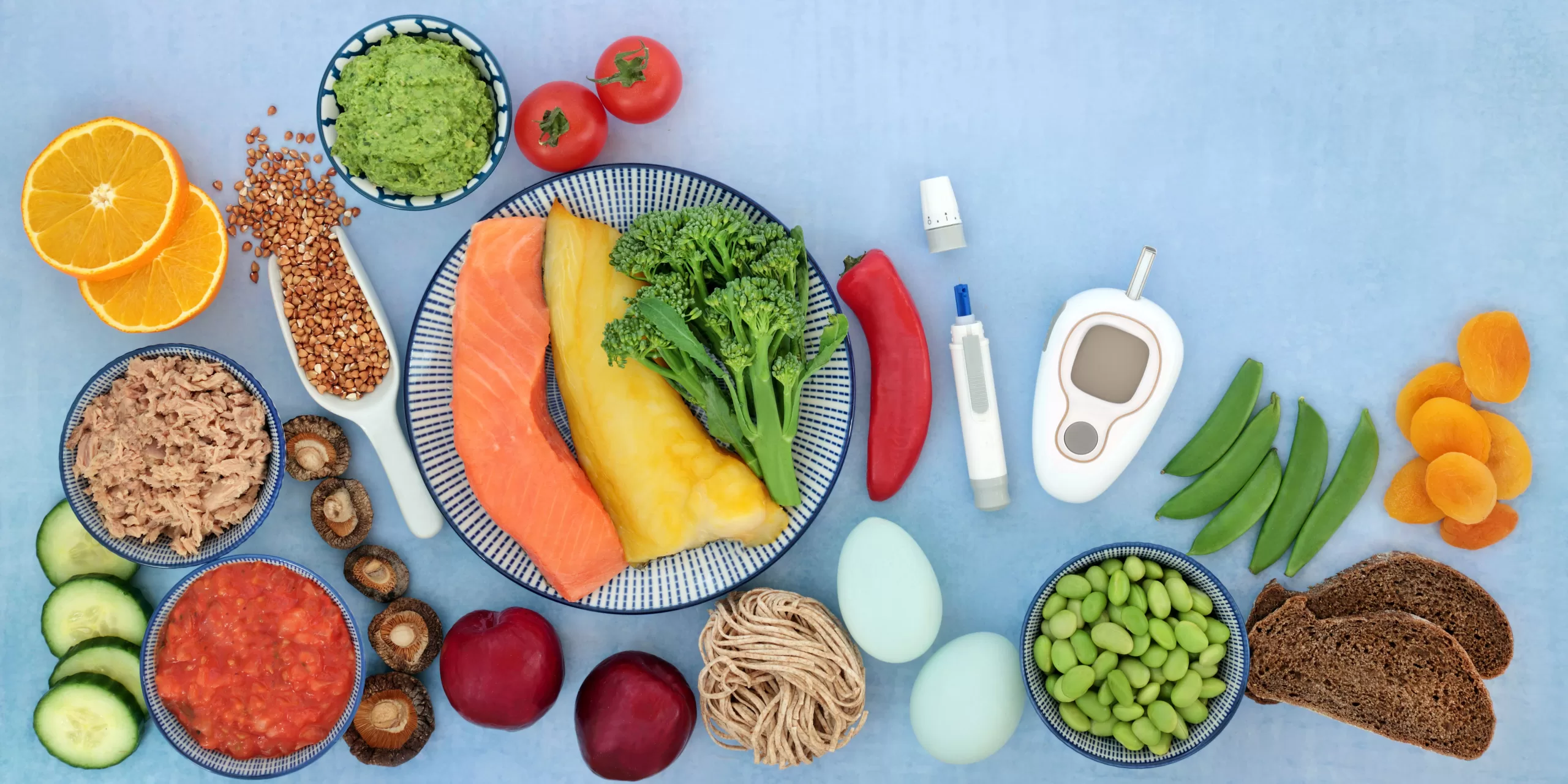

Dt. Natasha Mohan
Dietitian Natasha Mohan is one of the most influential and renowned nutritionist and dietitian, with over 3 Million Followers on YouTube and 200+ Million Views and with 10+ Years of Experience. Dietitian Natasha Mohan is a transformation expert, Motivational Speaker and Lifestyle Expert. She has touched million of lives. She specializes in Therapeutic Diets Like, PCOS/PCOD, Thyroid, Diabetes, Cholesterol, Blood pressure, and other lifestyle disorder.
Table of Contents
Blood Sugar Diet Chart for Healthy Glucose Control and Wellness
Managing blood sugar diet chart is crucial for overall health, especially for individuals with diabetes or those at risk of developing the condition. A well-planned diet chart tailored to your needs can help you maintain glucose levels, prevent complications, and enhance your quality of life.
Understanding Blood Sugar Levels
Blood sugar diet chart, or glucose, is the primary source of energy for your body. Maintaining balanced levels is essential to avoid health issues like fatigue, weight gain, and long-term complications such as nerve damage and cardiovascular problems. Diet plays a pivotal role in blood sugar management, making it vital to choose the right foods in the right proportions.
What Are Blood Sugar Levels?
Blood sugar, also called blood glucose, is the primary source of energy for your body. It fuels your cells, muscles, and brain, helping you stay active and alert throughout the day. But too much or too little sugar in your bloodstream can disrupt this balance and lead to complications.
Why Do They Matter?
Managing blood sugar isn’t just for people with diabetes—it’s crucial for everyone. Stable blood sugar levels prevent energy crashes, mood swings, and long-term health issues like heart disease or nerve damage.
Symptoms of High and Low Blood Sugar
Ever felt shaky, dizzy, or irritable when you skip meals? That’s low blood sugar talking. On the flip side, constant thirst, fatigue, and frequent urination could signal high blood sugar. Knowing these signs can save you from health crises.
General Guidelines
Eat every 3–4 hours to maintain stable blood sugar
Focus on complex carbs (whole grains, legumes)
Avoid refined sugars and processed foods
Add lean protein and healthy fats to every meal
Drink plenty of water
7-Day Blood Sugar-Friendly Diet Chart
| Time | Meal | Food Ideas |
|---|---|---|
| 7:00 AM | Warm Water | 1 glass warm water + lemon (optional: pinch of cinnamon) |
| 8:00 AM | Breakfast | – Oats porridge with flaxseeds and almonds- Boiled egg or paneer- Herbal tea/Green tea |
| 11:00 AM | Mid-Morning | – 1 small apple or guava- 5 soaked almonds + 2 walnuts |
| 1:00 PM | Lunch | – 1-2 multigrain rotis- Mixed vegetable sabzi- Moong dal- Cucumber salad |
| 4:00 PM | Evening Snack | – Roasted chana or sprouts salad- Buttermilk or green tea |
| 7:00 PM | Dinner | – Grilled paneer or tofu- Steamed vegetables- Small portion of brown rice or 1 roti |
| 9:00 PM | Optional | – 1 tsp fenugreek seeds soaked overnight or a glass of turmeric milk (no sugar) |
Foods to Include
Whole grains: Brown rice, quinoa, oats, barley
Legumes: Moong dal, chana, rajma (in moderation)
Non-starchy vegetables: Broccoli, spinach, okra, gourds
Low-GI fruits: Apple, guava, pear, berries
Healthy fats: Nuts, seeds, olive oil
Proteins: Eggs, paneer, tofu, chicken breast, fish
Foods to Avoid
White bread, maida-based foods
Sugary drinks and sweets
Processed snacks
High GI fruits like mango, banana, grapes (limit portion)
Fried and fast food
Key Components of a Blood Sugar Diet Chart
Low Glycemic Index (GI) Foods: Opt for foods with a low GI to prevent rapid spikes in blood sugar levels. Examples include whole grains, legumes, and non-starchy vegetables.
Fiber-Rich Foods: Incorporate fiber-rich foods like oats, chia seeds, and green leafy vegetables. Fiber slows digestion, leading to more stable glucose levels.
Lean Proteins: Include lean proteins such as chicken, fish, eggs, and tofu. Proteins help you feel full longer and prevent overeating.
Healthy Fats: Add healthy fats from sources like avocados, nuts, and olive oil. These fats promote heart health and provide sustained energy.
Controlled Portions: Eating smaller, frequent meals can help regulate blood sugar levels throughout the day.
Tips for Success
Stay hydrated by drinking plenty of water throughout the day.
Avoid sugary drinks and processed foods.
Monitor portion sizes and avoid overeating, even with healthy foods.
Stay active with regular exercise to complement your dietary efforts.
Consultation with Professionals
While a general diet chart can guide you, consulting with a dietician or healthcare provider ensures that your plan is tailored to your unique needs and medical history. They can help you identify food sensitivities, manage medication interactions, and monitor your progress effectively.
Conclusion
A well-structured blood sugar diet chart, combined with a sattvic diet food chart, is a powerful tool for managing glucose levels and enhancing overall health. By adopting healthy eating habits and staying consistent, you can take charge of your wellness and lead a fulfilling life.
Managing blood sugar levels is essential to prevent complications such as fatigue, weight gain, nerve damage, and cardiovascular issues. It also helps maintain energy levels and overall health.
Low GI foods include whole grains, legumes, and non-starchy vegetables. These foods help prevent rapid spikes in blood sugar levels.
Fiber slows down digestion, leading to a gradual rise in blood sugar levels. Foods like oats, chia seeds, and leafy greens are great sources of fiber.
Yes, eating smaller, frequent meals helps regulate blood sugar levels throughout the day and prevents sudden spikes or crashes.
Absolutely. Consulting with a dietician or healthcare provider ensures your diet plan is tailored to your specific needs, medical history, and medication interactions.

